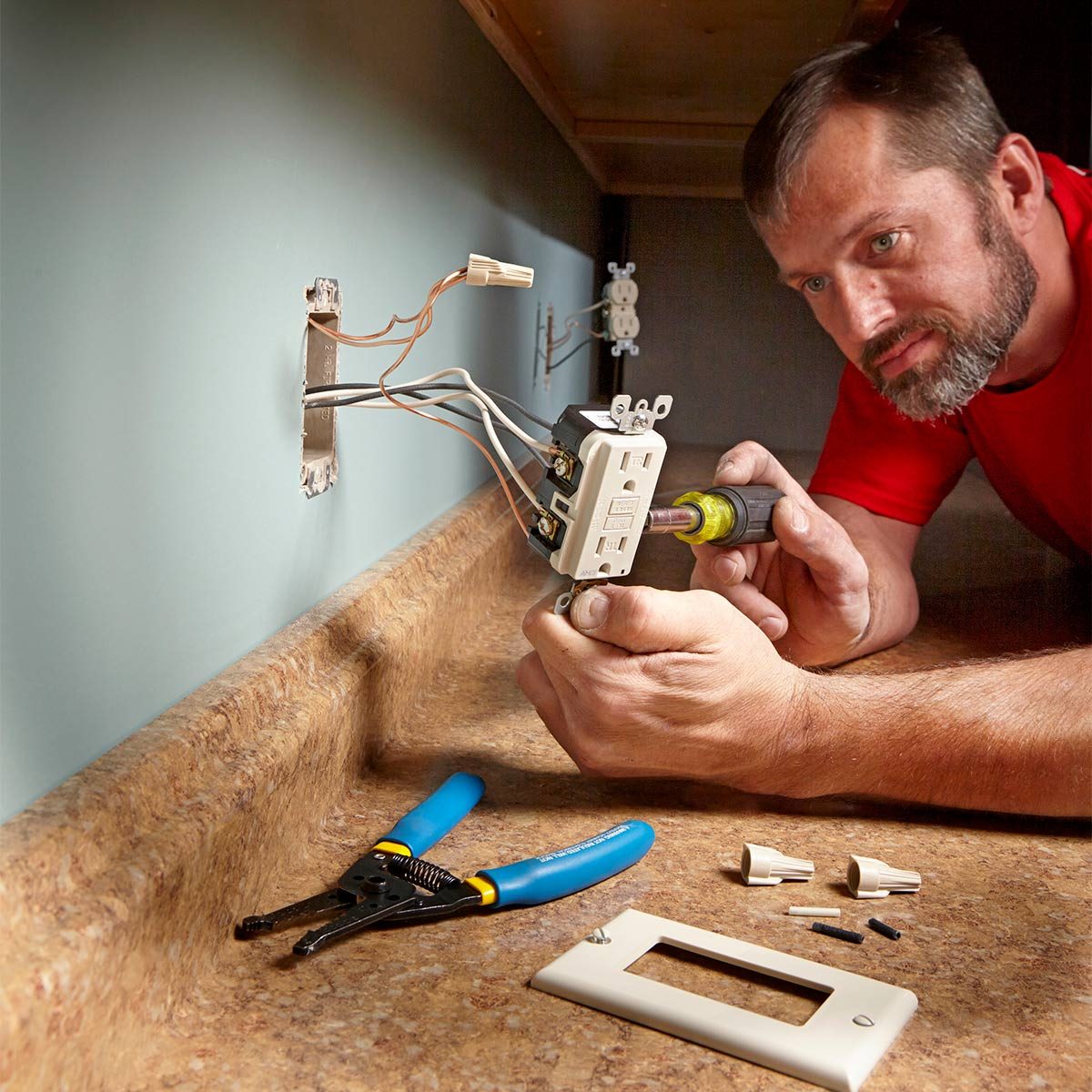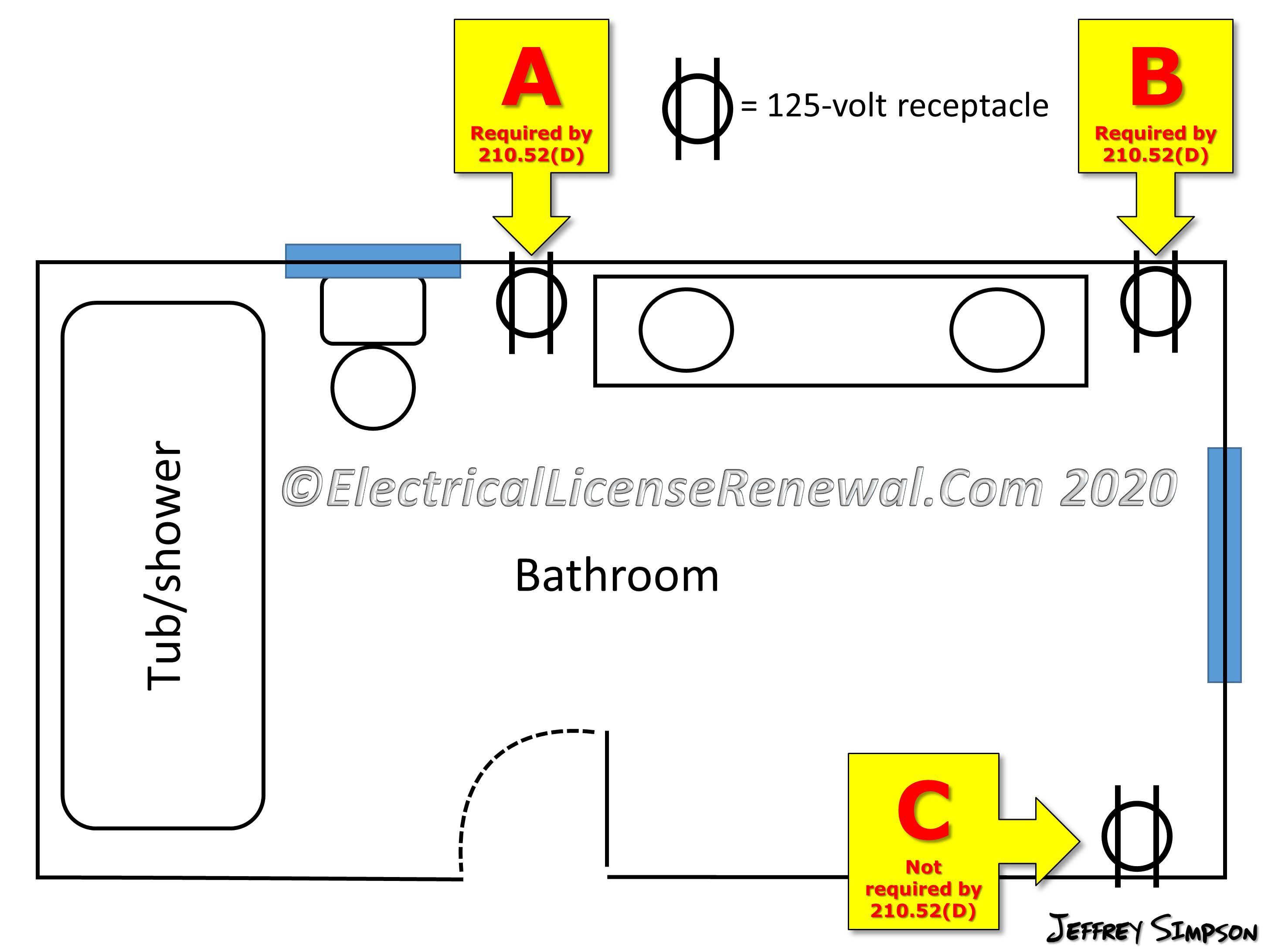Kitchen Cabinet Power Outlet Installation

Yo, so you wanna add some juice to your kitchen cabinets? That’s totally rad! But before you start messing with wires and outlets, you gotta be super careful. This ain’t like changing a lightbulb, dude. You’re dealing with electricity, and that’s no joke.
Safety Considerations
Safety is the ultimate vibe when you’re working with electricity. Like, seriously, don’t mess around. Here’s the lowdown on keeping yourself safe:
- Turn off the power: Before you even think about touching anything, make sure you’ve shut off the power to the circuit you’re working on. Check your breaker box and flip the switch to the “off” position. Use a voltage tester to make sure the power is off.
- Wear protective gear: You’re gonna want to wear safety glasses, gloves, and closed-toe shoes to protect yourself from any potential hazards.
- Work with a partner: It’s always a good idea to have someone else around in case you need help or something goes wrong. They can also be your hype man while you’re working.
- Don’t work alone: This is a serious job. Don’t be a lone wolf. Have a buddy around just in case.
Installation Steps
Alright, now that you’re feeling safe and sound, let’s get this party started! Here’s the breakdown of installing a kitchen cabinet power outlet:
- Plan your wire routing: Before you start drilling holes, you need to figure out where you’re going to run your wires. You want to make sure they’re hidden and protected. You can use a stud finder to locate the studs in your walls, and then run the wires behind them.
- Choose your outlet placement: Think about where you’ll be using the outlet the most. You don’t want it too high or too low. Also, make sure it’s not in a place where it could get damaged or blocked.
- Cut the hole: Once you’ve decided where to put the outlet, use a hole saw to cut a hole in the cabinet. Make sure the hole is the right size for the outlet box.
- Secure the outlet box: Use screws or clips to attach the outlet box to the cabinet. Make sure it’s secure and level.
- Run the wires: Now it’s time to run the wires from the outlet box to the power source. You can use wire staples or clips to keep the wires secure.
- Connect the wires: Connect the wires to the outlet using the appropriate terminal screws. Make sure you’re connecting the correct wires to the correct terminals.
- Install the outlet cover: Once you’ve connected the wires, you can install the outlet cover.
- Turn on the power: Once you’ve finished installing the outlet, you can turn the power back on and test it to make sure it’s working properly.
Choosing the Right Power Outlet, Kitchen cabinet power outlet
Okay, so you’re thinking about what kind of outlet to use. You want to make sure it’s the right fit for your kitchen cabinets, right? Here’s the scoop on picking the perfect outlet:
- Amperage: This is how much current the outlet can handle. You want to make sure it’s high enough for the appliances you’ll be using. Most kitchen appliances use 15 amps, but some may require 20 amps.
- Voltage: This is the amount of electrical pressure in the outlet. In the US, the standard voltage is 120 volts.
- Grounding: This is a safety feature that helps prevent electrical shocks. Make sure the outlet you choose has a grounding pin.
Important Notes
- GFCI Outlets: If your outlet is going to be in a wet area, like near a sink, you need to use a GFCI (Ground Fault Circuit Interrupter) outlet. These outlets are designed to protect you from electrical shocks.
- Code Compliance: Make sure you’re following all local electrical codes when installing your outlet. You can find these codes online or at your local building department.
Benefits of Kitchen Cabinet Power Outlets

Yo, let’s be real, having power outlets inside your kitchen cabinets is like, totally next-level. It’s not just about convenience, it’s about making your kitchen way more functional and, like, totally awesome.
Increased Workspace Efficiency
Okay, so think about it. You’re whipping up a feast, and you need to use a blender, a food processor, and maybe even a coffee maker. With power outlets in your cabinets, you can have all these appliances right there, without having to hunt for outlets on the counter or, like, drag extension cords all over the place. It’s a total game-changer, making your kitchen feel way more spacious and organized.
Enhanced Organization and Functionality
Having power outlets in your cabinets lets you keep all your small appliances and charging devices tucked away, but still easily accessible. It’s like, the ultimate organization hack. No more cords dangling everywhere, and your kitchen looks way cleaner and less cluttered.
Simplified Use of Small Appliances
You know how it is, you’re in the middle of cooking, and you need to use a mixer, but the only outlet is on the other side of the kitchen? It’s like, such a pain. But with power outlets in your cabinets, you can just grab your mixer, plug it in, and get to work. It’s so much easier and way less stressful.
Kitchen Cabinet Power Outlet Design Considerations

Yo, so you’re thinking about adding some power outlets to your kitchen cabinets, right? It’s a super useful thing to do, but you gotta think about how to make it look good and be safe too. Here’s what you need to know about designing your kitchen cabinet power outlet system:
Safety Features
Safety is, like, the most important thing, so you gotta think about how to keep things safe. Here are some things to consider:
- GFCI Protection: A GFCI outlet is basically a safety device that shuts off the power if it detects a ground fault, which is like a short circuit. This is super important for kitchens because there’s a lot of water around.
- Tamper-Resistant Outlets: These outlets have a special design that prevents kids from sticking things into them, which is a good idea if you have little ones around.
- Outlet Covers: You can get covers that protect the outlets from spills and stuff, which is good for areas that are prone to getting messy.
Accessibility
Accessibility is key, like, you wanna be able to reach your outlets easily, right? Here’s what you need to consider:
- Placement: Think about where you’ll be using your appliances and make sure the outlets are in a spot that’s easy to reach.
- Height: You don’t want to have to bend over to plug something in, so make sure the outlets are at a comfortable height.
- Number of Outlets: Think about how many appliances you’ll be using and make sure you have enough outlets.
Aesthetics
Okay, so you want your kitchen to look good, right? Here are some things to consider about the look of your power outlets:
- Outlet Covers: You can get covers that match your kitchen cabinets or even add some cool designs.
- Hidden Outlets: You can even get outlets that are hidden behind a door or panel, so they’re not visible when you don’t need them.
- Integrated Outlets: You can get outlets that are built right into your cabinets, so they look like they’re part of the design.
Types of Kitchen Cabinet Power Outlet Covers
There are a bunch of different types of outlet covers, so you can pick the ones that work best for your kitchen. Here’s a rundown:
- Standard Outlet Covers: These are the most basic type of cover, and they’re pretty affordable.
- Decorative Outlet Covers: These covers come in all sorts of colors and styles, so you can find ones that match your kitchen decor.
- Slide-Out Outlet Covers: These covers slide out when you need to use them, and then slide back in when you’re done. They’re good for saving space.
- Flip-Up Outlet Covers: These covers flip up when you need to use them, and then flip back down when you’re done. They’re good for areas where you don’t want the outlets to be visible.
- Retractable Outlet Covers: These covers have a cord that you can pull out to extend the outlet, and then you can retract it back in when you’re done. They’re good for areas where you need a lot of reach.
Incorporating Kitchen Cabinet Power Outlets
Here are some ideas for incorporating kitchen cabinet power outlets into different designs and layouts:
- Island Cabinet: You can add power outlets to the island cabinet so you can easily plug in appliances like blenders, toasters, or coffee makers.
- Base Cabinets: You can add power outlets to the base cabinets for appliances like microwaves or small refrigerators.
- Wall Cabinets: You can add power outlets to the wall cabinets for appliances like coffee makers or toasters.
- Corner Cabinets: You can add power outlets to corner cabinets to make use of the space and make it easy to plug in appliances.
- Under-Cabinet Lighting: You can add power outlets to the underside of your cabinets to power under-cabinet lighting.
Installing a kitchen cabinet power outlet can be a great way to add convenience and functionality to your kitchen. However, if you have European-style cabinets, you may need to adjust the doors to accommodate the outlet. Luckily, there are resources available to help you through this process, like this comprehensive guide on how to adjust European cabinet doors.
Once you’ve successfully adjusted the doors, you can move on to installing your new kitchen cabinet power outlet.
A kitchen cabinet power outlet is a convenient addition for charging devices or powering small appliances. Similarly, a triple door medicine cabinet can transform a bathroom by adding storage and style. Both these features can be easily integrated into existing spaces, making them valuable additions to any home.
